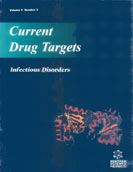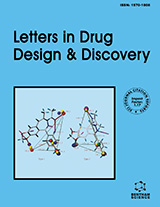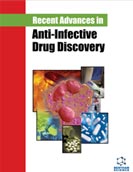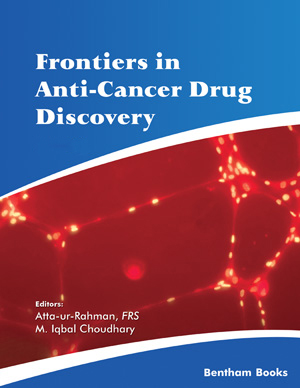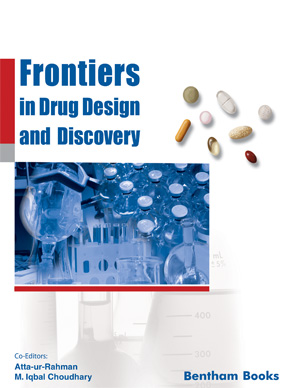Abstract
The genetic heterogeneity of hepatitis B virus (HBV) (8 genotypes A-H) has been applied for tracing the route of HBV transmission and the geographical migration of HBV carriers but it also appeared to have clinical implications. The secondary structure of e encapsidation signal could explain why the precore mutant virus prevails in Mediterranean countries, where genotype D is most prevalent, while the wild type virus is frequent in Western countries, where genotype A is most prevalent. There is increasing evidence that patients infected with genotype C have more severe outcome of chronic liver disease than those infected with genotype B. Genotype B was associated with fulminant hepatitis and more severe episodes of acute exacerbation of chronic HBV infection. Patients infected with genotype B appeared to seroconvert earlier than those infected with genotype C. The hepatitis delta virus (HDV) has 3 genotypes (I, II, III) which are associated with different disease patterns. Genotype III is the most distantly related HDV genotype and is associated with the most severe outcome while genotype II with relatively mild liver disease. The most geographically widespread genotype is I and is associated with a broad spectrum of chronic liver disease. The hepatitis C virus (HCV) displays high genetic heterogeneity with six genotypes (1-6), multiple subtypes and quasispecies. This viral diversity has epidemiological and clinical implications and has been associated with the severity of liver disease, prognosis, response to treatment and failure to generate an effective protective vaccine. HCV genotype 1 is the predominant genotype in Western countries and has been associated with a low response rate to interferon-alpha (IFN-α) or to the combination of ribavirin and IFN-α. Consequently the duration of treatment has been tailored according to HCV genotype.
Keywords: hepatitis b virus, hepatitis c virus, hepatitis d virus, genotypes, clinical course, interferon treatment, nucleoside analogues
Current Drug Targets - Inflammation & Allergy
Title: Genetic Heterogeneity of Hepatitis Viruses and its Clinical Significance
Volume: 4 Issue: 1
Author(s): A. Alexopoulou and S. P. Dourakis
Affiliation:
Keywords: hepatitis b virus, hepatitis c virus, hepatitis d virus, genotypes, clinical course, interferon treatment, nucleoside analogues
Abstract: The genetic heterogeneity of hepatitis B virus (HBV) (8 genotypes A-H) has been applied for tracing the route of HBV transmission and the geographical migration of HBV carriers but it also appeared to have clinical implications. The secondary structure of e encapsidation signal could explain why the precore mutant virus prevails in Mediterranean countries, where genotype D is most prevalent, while the wild type virus is frequent in Western countries, where genotype A is most prevalent. There is increasing evidence that patients infected with genotype C have more severe outcome of chronic liver disease than those infected with genotype B. Genotype B was associated with fulminant hepatitis and more severe episodes of acute exacerbation of chronic HBV infection. Patients infected with genotype B appeared to seroconvert earlier than those infected with genotype C. The hepatitis delta virus (HDV) has 3 genotypes (I, II, III) which are associated with different disease patterns. Genotype III is the most distantly related HDV genotype and is associated with the most severe outcome while genotype II with relatively mild liver disease. The most geographically widespread genotype is I and is associated with a broad spectrum of chronic liver disease. The hepatitis C virus (HCV) displays high genetic heterogeneity with six genotypes (1-6), multiple subtypes and quasispecies. This viral diversity has epidemiological and clinical implications and has been associated with the severity of liver disease, prognosis, response to treatment and failure to generate an effective protective vaccine. HCV genotype 1 is the predominant genotype in Western countries and has been associated with a low response rate to interferon-alpha (IFN-α) or to the combination of ribavirin and IFN-α. Consequently the duration of treatment has been tailored according to HCV genotype.
Export Options
About this article
Cite this article as:
Alexopoulou A. and Dourakis P. S., Genetic Heterogeneity of Hepatitis Viruses and its Clinical Significance, Current Drug Targets - Inflammation & Allergy 2005; 4 (1) . https://dx.doi.org/10.2174/1568010053622867
| DOI https://dx.doi.org/10.2174/1568010053622867 |
Print ISSN 1568-010X |
| Publisher Name Bentham Science Publisher |
Online ISSN 1568-010X |
 22
22Related Articles
-
Recent Progress in the Identification and Clinical Evaluation of Inhibitors of the Mitotic Kinesin KSP
Current Topics in Medicinal Chemistry Bortezomib: A New Pro-Apoptotic Agent in Cancer Treatment
Current Cancer Drug Targets Turning Tumor-Promoting Copper into an Anti-Cancer Weapon via High-Throughput Chemistry
Current Medicinal Chemistry Targeting Calcium Channels to Block Tumor Vascularization
Recent Patents on Anti-Cancer Drug Discovery Macroautophagy as a Target of Cancer Therapy
Current Cancer Therapy Reviews NOTCH Signaling as a Novel Cancer Therapeutic Target
Current Cancer Drug Targets Observations on the Use of the Avian Chorioallantoic Membrane (CAM) Model in Investigations into Angiogenesis
Current Drug Targets - Cardiovascular & Hematological Disorders Selective Internal Radiation Therapy with Yttrium-90 for Unresectable Liver Tumours
Reviews on Recent Clinical Trials Antiviral Therapy Targeting Viral Polymerase
Current Pharmaceutical Design Molecular Mechanisms and Proposed Targets for Selected Anticancer Gold Compounds
Current Topics in Medicinal Chemistry Upregulation of Focal Adhesion Kinase by 14-3-3ε via NFκB Activation in Hepatocellular Carcinoma
Anti-Cancer Agents in Medicinal Chemistry The Biphasic Expression Pattern of miR-200a and E-cadherin in Epithelial Ovarian Cancer and its Correlation with Clinicopathological Features
Current Pharmaceutical Design Phosphorothioate Oligonucleotides: Effectiveness and Toxicity
Current Drug Targets Covalently and Ionically Crosslinked Chitosan Nanogels for Drug Delivery
Current Pharmaceutical Design Therapeutic Implications of Tocilizumab, A Humanized Anti-Interleukin-6 Receptor Antibody, for Various Immune-Mediated Diseases: An Update Review
Current Rheumatology Reviews Mechanisms of Trastuzumab Resistance in Breast Cancer
Anti-Cancer Agents in Medicinal Chemistry Novel Inhibitors of Inosine Monophosphate Dehydrogenase in Patent Literature of the Last Decade
Recent Patents on Anti-Cancer Drug Discovery The Role of the Metabolism of Anticancer Drugs in Their Induced-Cardiotoxicity
Current Drug Metabolism A Systematic Review and Meta-analysis of Clinical Studies on Ankylosing Spondylitis and Neutrophil to Lymphocyte Ratio
Current Rheumatology Reviews Development, Validation, and Applications of Anisotropic Polarizable Molecular Mechanics to Study Ligand and Drug-Receptor Interactions
Current Pharmaceutical Design


